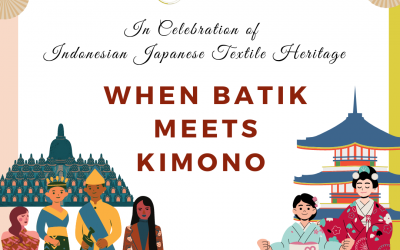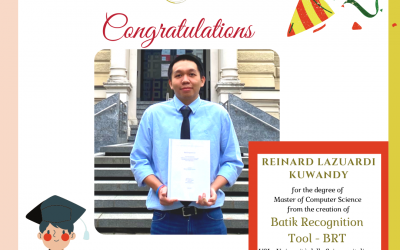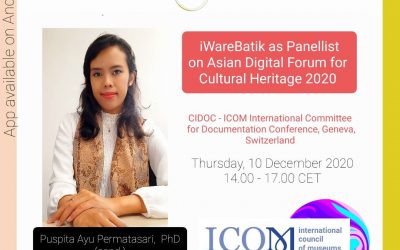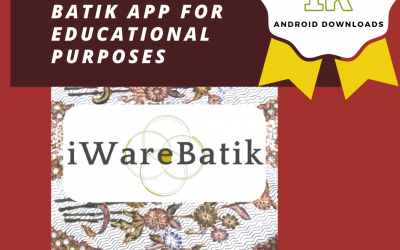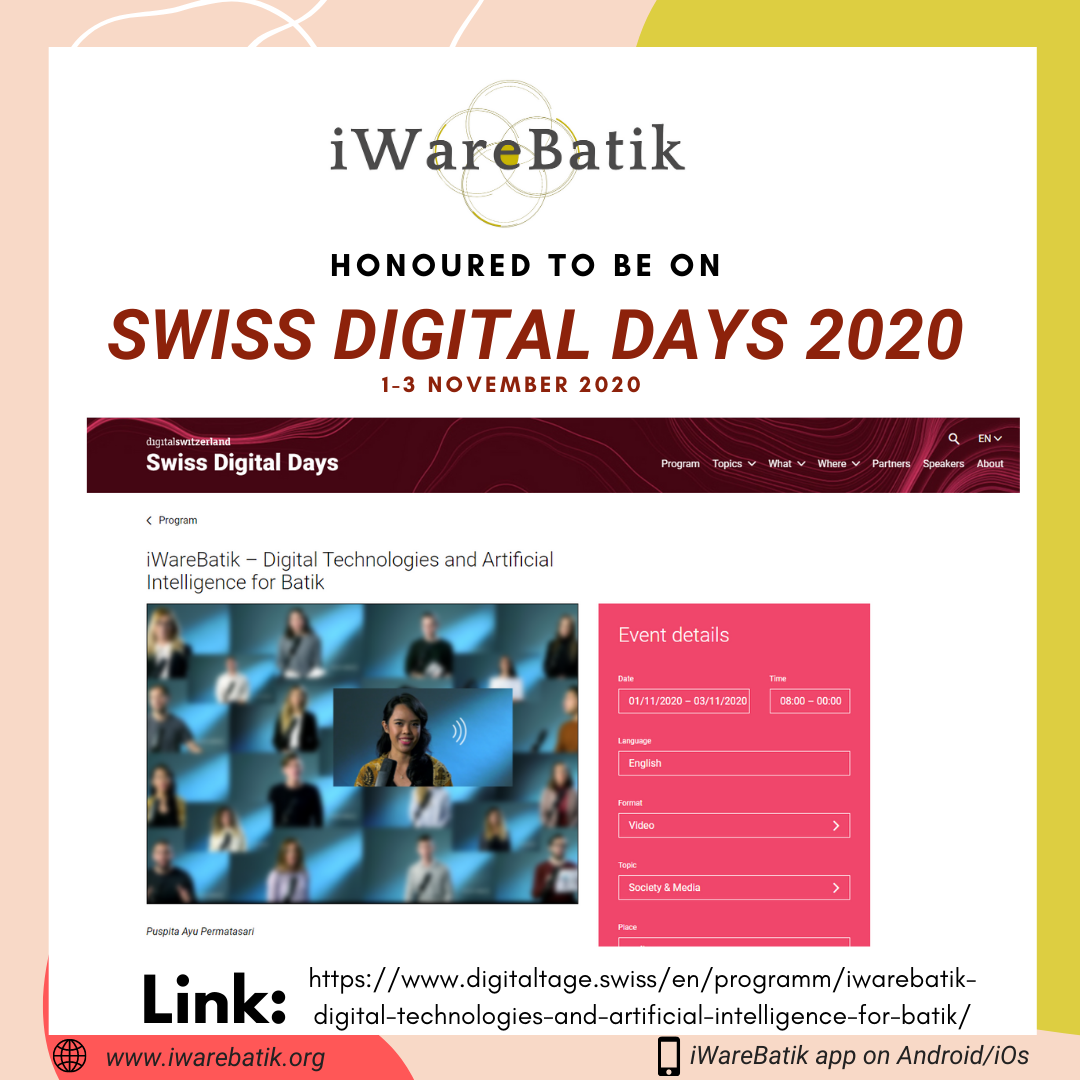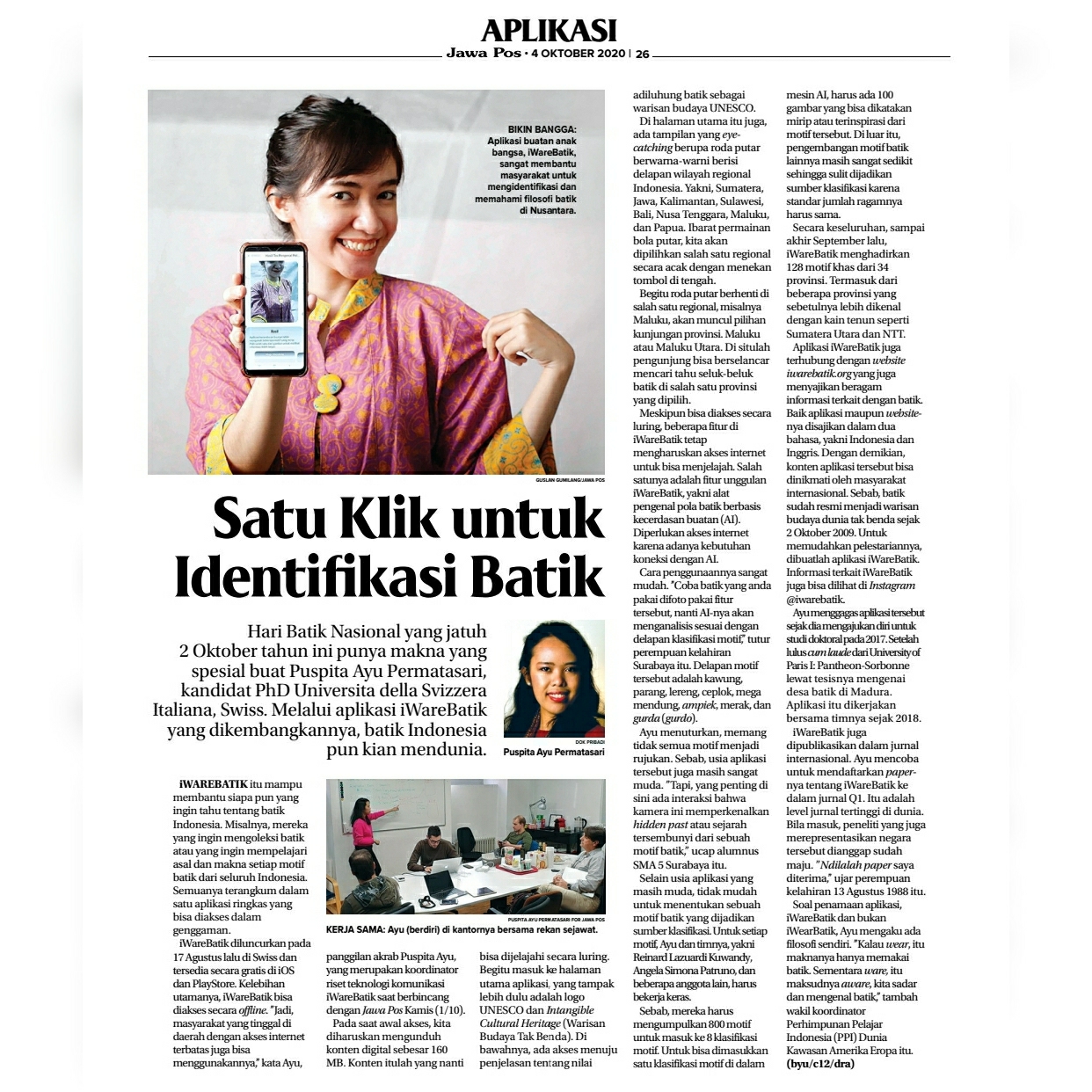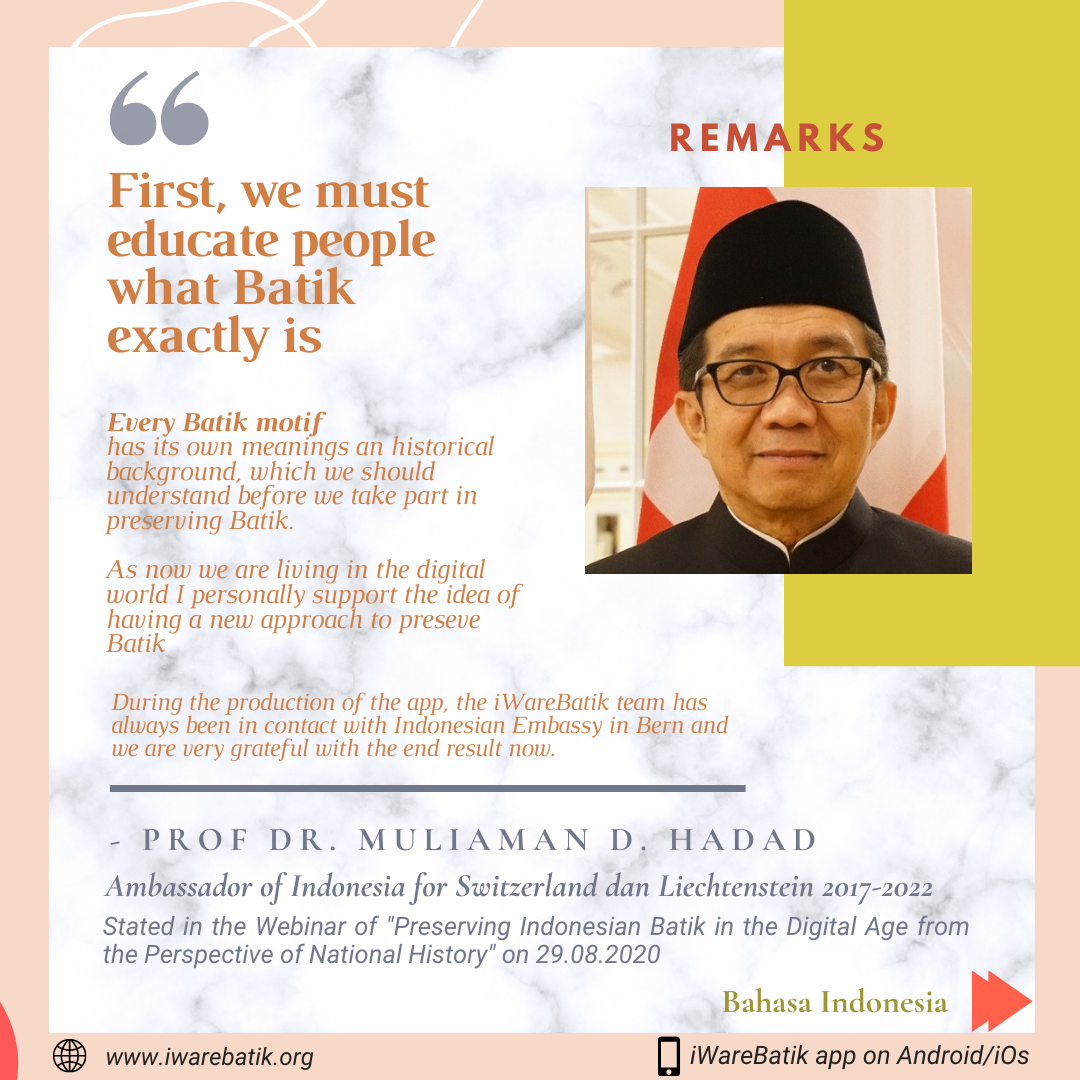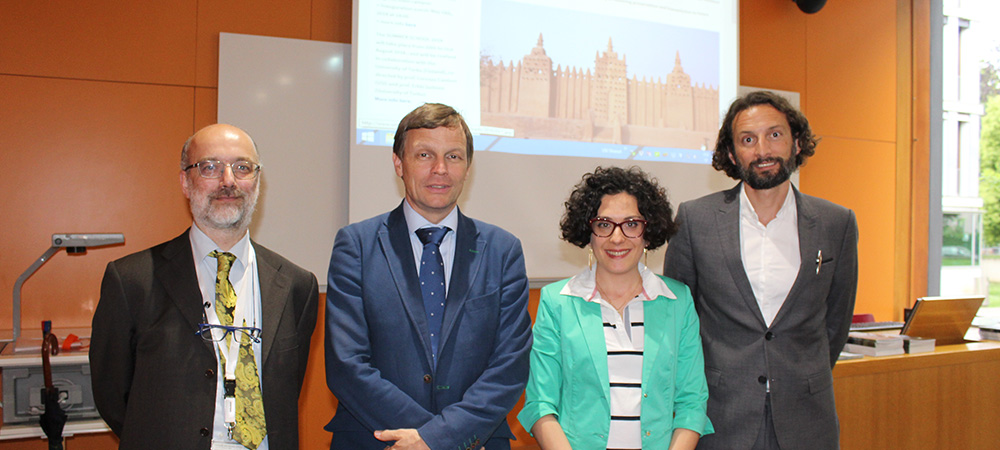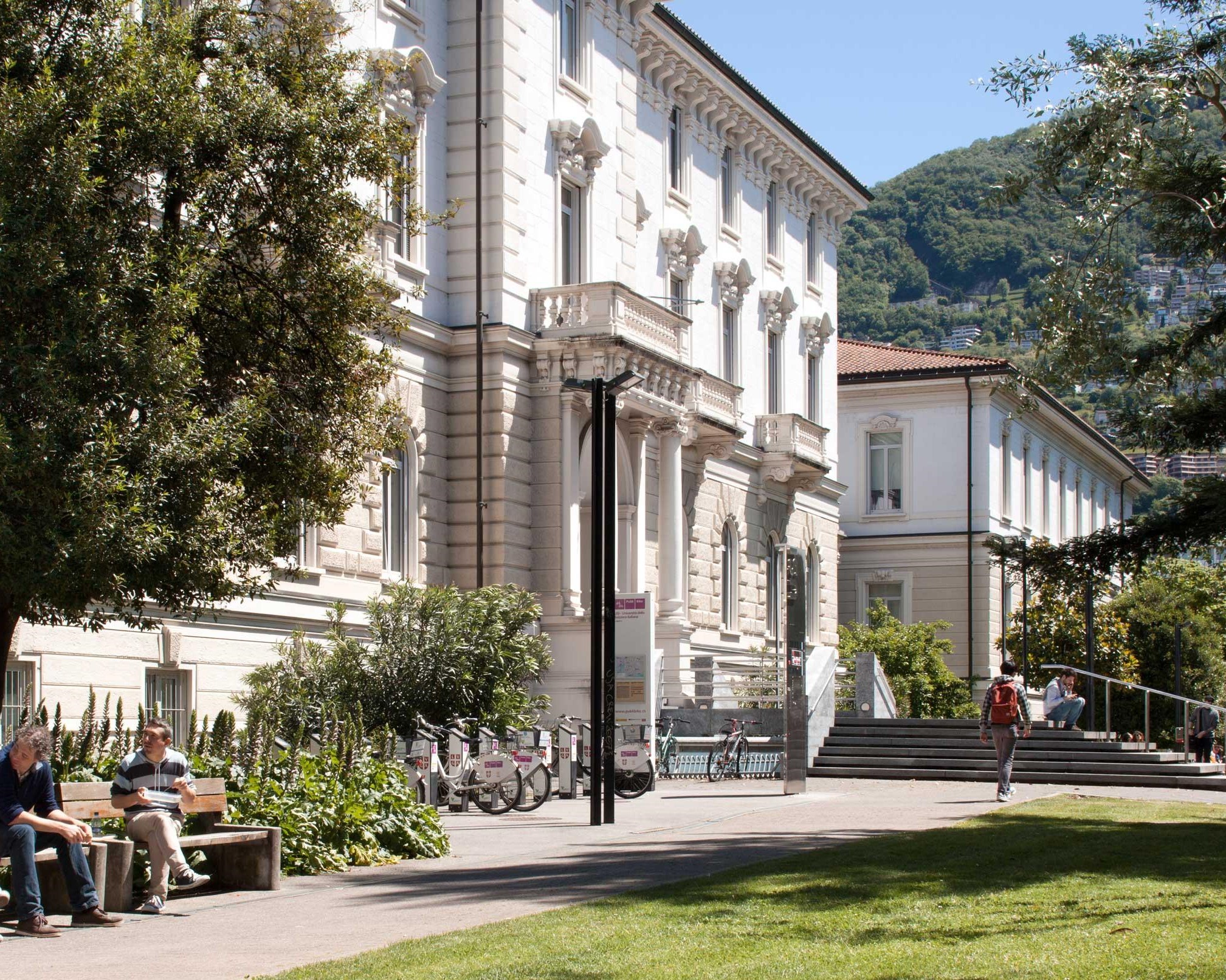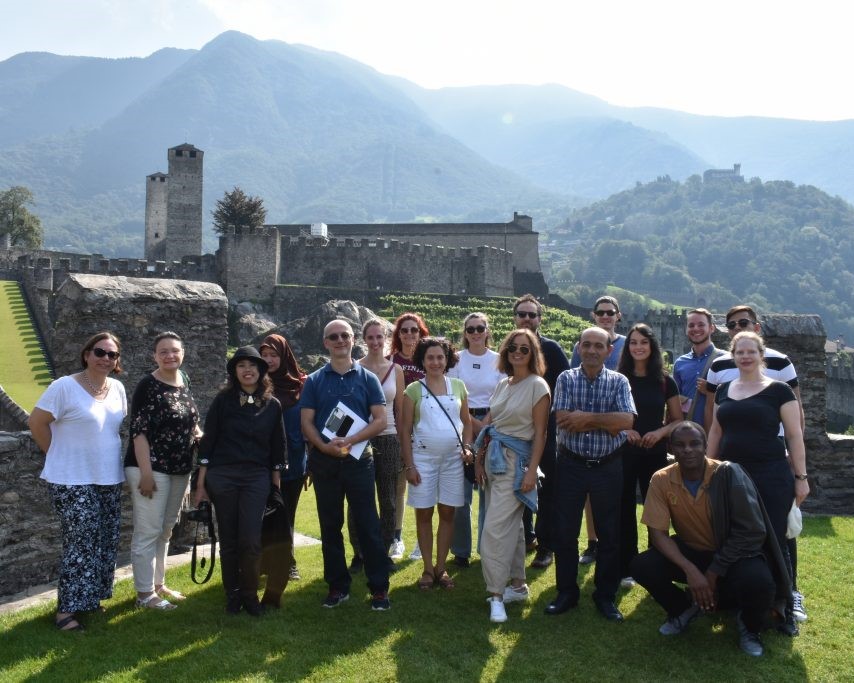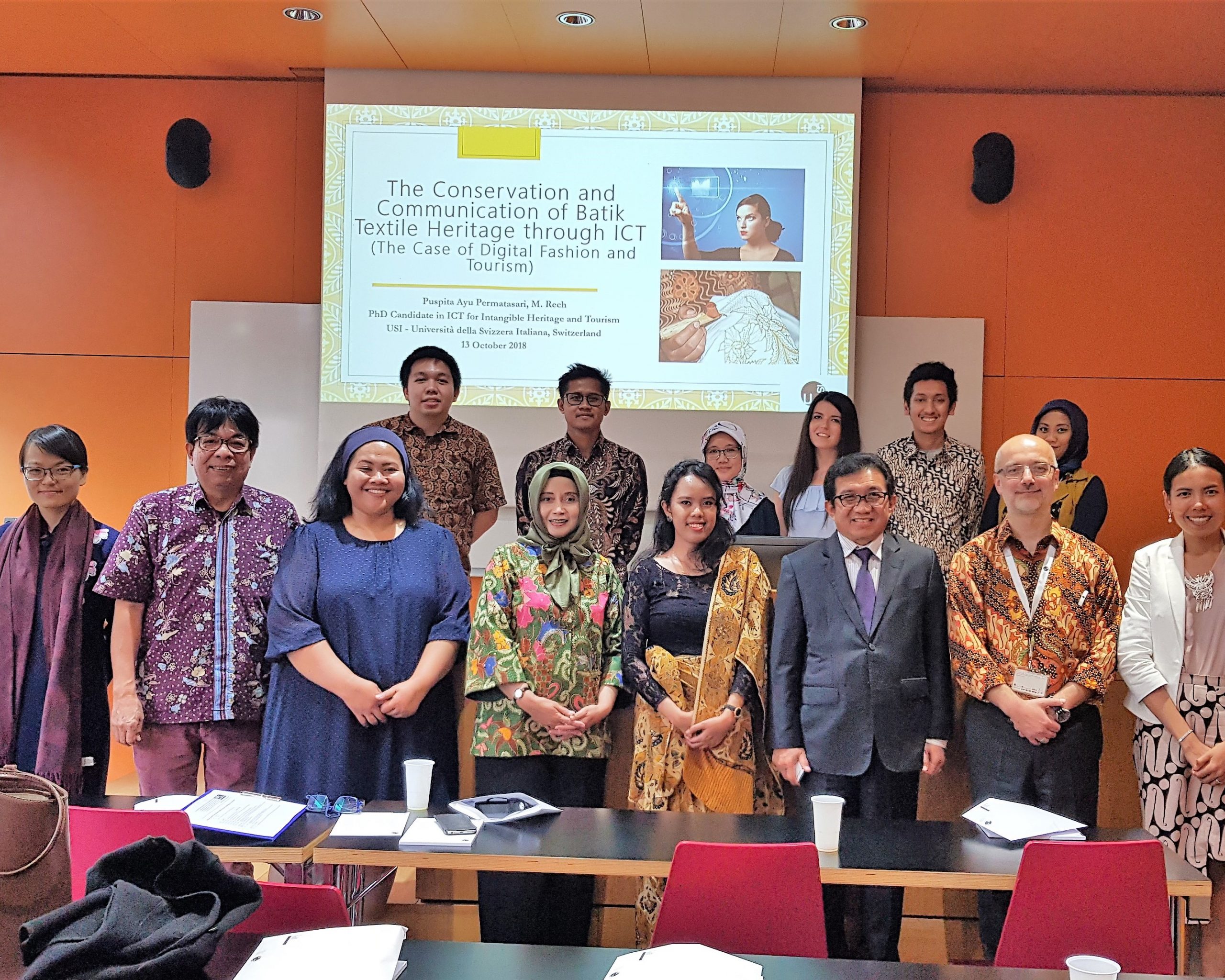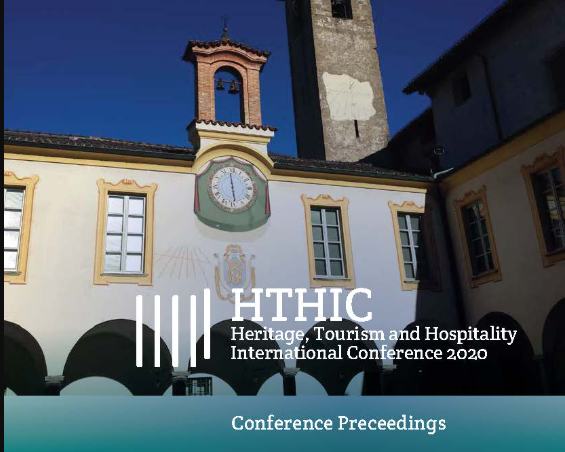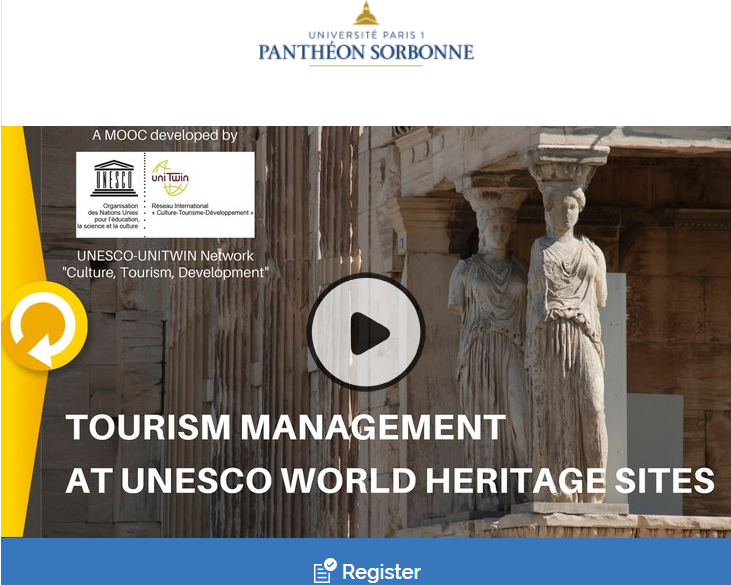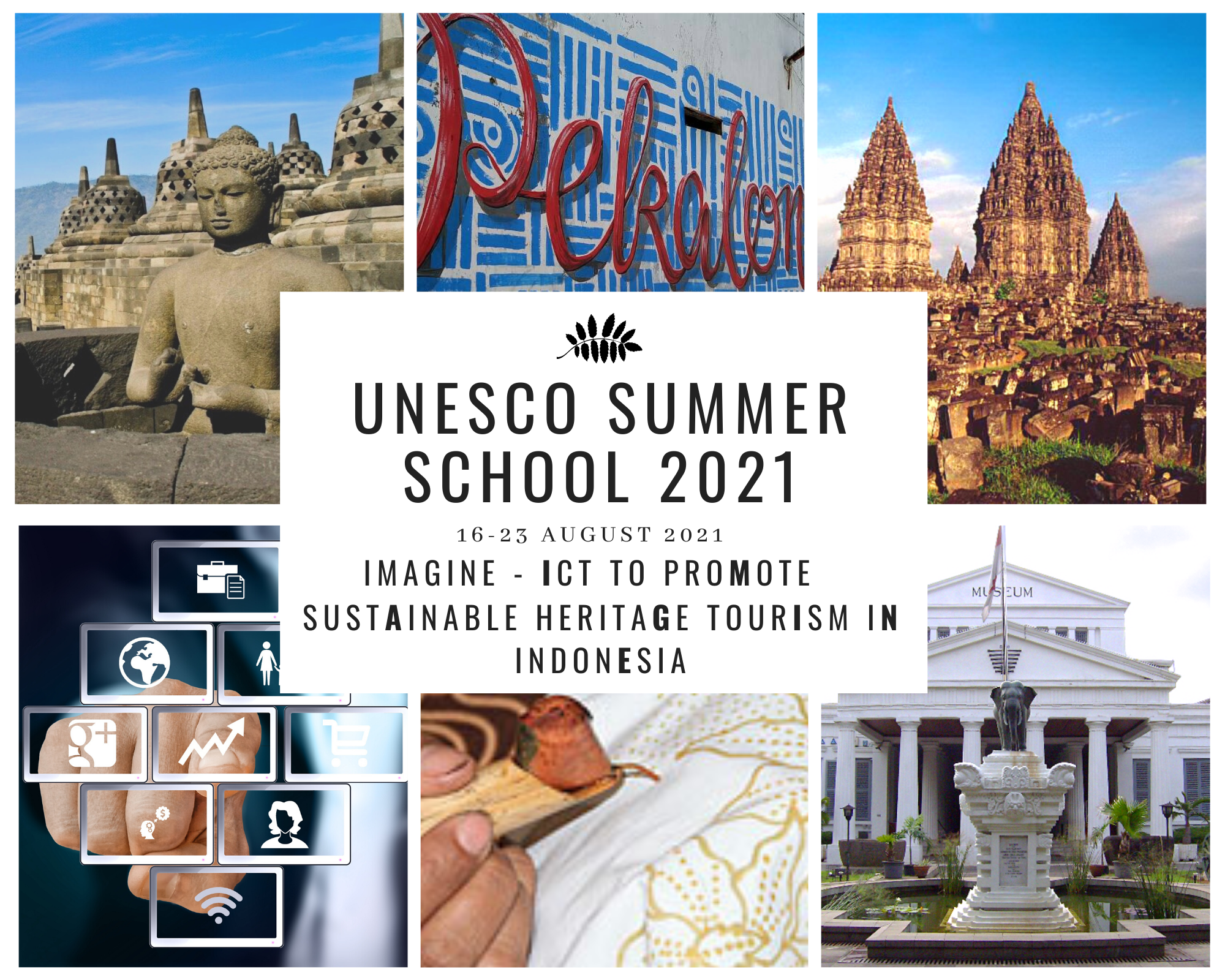Home / About iWareBatik – News and Events
News and Events
When Batik Meets Kimono, The Memory of Indonesian Japan Batik Talkshow
When Batik meets Kimono, the beauty of Indonesia and Japan friendship is
Batik Recognition Tool: Successful USI Master Thesis in Artificial Intelligence Presented by Reinard Lazuardi Kuwandi
Congratulations to Reinard Lazuardi Kuwandy, the software engineer of Batik Recognition Tool of iWareBatik, for obtaining Master degree in
iWareBatik Presented on Asian Digital Forum CIDOC – ICOM Conference 2020
iWareBatik project presented as the success story of Digital Media Engagement on Intangible
The Most Downloaded App: iWareBatik reaches more than 1000 downloads
iWareBatik reaches more than 1000 downloads on Android and iOs platform, marking its
iWareBatik on Prestigious Swiss Digital Days 2020
iWareBatik is selected to take part in Swiss Digital Days 2020, a prestigious Swiss national event whose aim to
iWareBatik on Youth Oath Day 2020: Exclusive interview with Jawa Pos, Mata Garuda LPDP and Australian Garland Magazine
Youth Oath Day is an Indonesian non-holiday annual celebration to commemorate the rise of
Batik as the Manifestation of Indonesian Defense Heritage
Pancasila, Batik, and Bahasa Indonesia are the element of Indonesian defence heritage as they codify the identity of Indonesian nation.
Research Updates
No Results Found
The page you requested could not be found. Try refining your search, or use the navigation above to locate the post.

Image by Karolina Grabowska from Pixabay
How to be Our Guest Contributors
Batik goes beyond a textile. Batik is about a place, a state of mind, expression, feelings and memory.
Let’s inspire the world with your stories!
USI UNESCO Chair
With the creation in 1972 of the UNESCO Convention concerning the Protection of the World Cultural and Natural Heritage (UNESCO World Heritage Centre), great attention has been paid to cultural and natural heritage all over the world, leading to a rise in awareness and concern for preserving heritage for future generations. The World Heritage Convention defines heritage as “our legacy from the past, what we live with today, and what we pass on to future generations”.
The World Heritage Convention, while acknowledging the responsibility of each respective country to manage their own WHSs, also emphasizes the concept of universality, meaning that this heritage belongs to the international community independently of the territory where it is located. This concept goes then beyond political and geographic boundaries of nation-states: it reflects the wish to create a worldwide common heritage. One of the major issues for site managers is the accomplishment of the delicate balance between visits and heritage conservation in order to preserve the World Heritage for future generations while providing access to visitors. While sustainability may be considered from many different perspectives, here it is stressed that tourism should not at any circumstances damage the protected heritage and its conservation.
Information and Communication Technologies (ICT) are closely connected with the above-listed goals: (i) they support information, communication and interchanges at the global level – well beyond national borders – hence contributing to the building of a world common heritage; (ii) they are of the utmost importance in order to document, map and preserve both natural and cultural heritage; (iii) they can play a major role to develop and promote sustainable tourism, both in developed as well as in developing and emerging areas.
Photo: USI UNESCO Chair
GOALS
- Support WHSs in online communication through extensive research, training, capacity building, sharing and dissemination of guidelines, best practices, and case studies.
- Help the WHSs in developing and emerging countries to develop sustainably by training local stakeholders.
- Ensure a deeper understanding and respect of cultural and natural richness of the sites amongst visitors and prospects at the global level. In particular, educating tourists and prospects to understand the fragility of WHSs, and preparing them when it comes to the behavior at the sites, i.e. how they should contribute to protect and not damage the heritage, as well as educating them on how their behavior and actions should enrich and support the development of local communities.
- Develop an interdisciplinary network of scholars active in the relevant fields.
- Set up an annual summer school devoted to the topic; attract young researchers, and players in respective tourism bodies to do research at the Chair
News from USI UNESCO Chair
iWareBatik Contributors
Batik arts and traditions spark the interests and passions of textile heritage lovers around the world. We acknowledge the contributions of our colleagues and friends who have shared their vision and insights on Batik intangible cultural heritage with us. We hope that this effort would contribute to the improvement and the sustainability of Batik safeguarding practice in many years to come.

M. Fajar Haqy Ismaya
Indonesian - Kocaeli University, Turkey
About Haqy
Haqy is currently pursuing a Master degree in International Relations at Kocaeli University. He is in charge of the Coordinator of Overseas Indonesian Student Association Alliance (OISAA) in America and European Regions
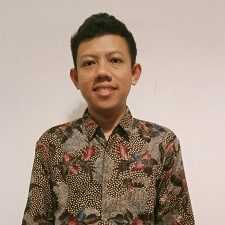
Choirul Anam
Indonesian - Charles University, Czech Republic
About Anam
Choirul Anam is currently pursuing a Doctoral degree in Public Policy in Poverty Eradication at Charles University, Czech Republic. He works as an executive auditor in Audit Board of the Republic of Indonesia.
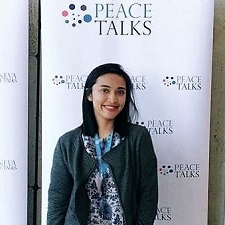
Arzita Shafira
Indonesian - Geneva School of Diplomacy, Switzerland
About Arzita
Arzita Shafira holds a Master degree in Political Science from Geneva School of Diplomacy, Switzerland. She works at Indonesian Permanent Delegation for the UN in Geneva, Switzerland.

